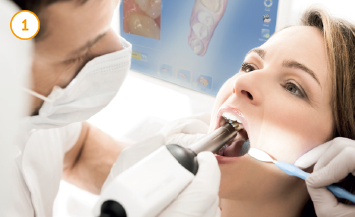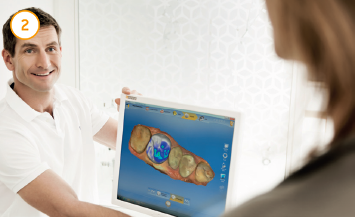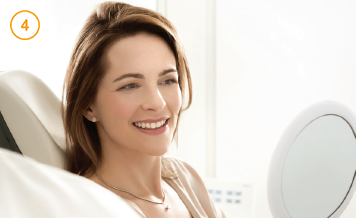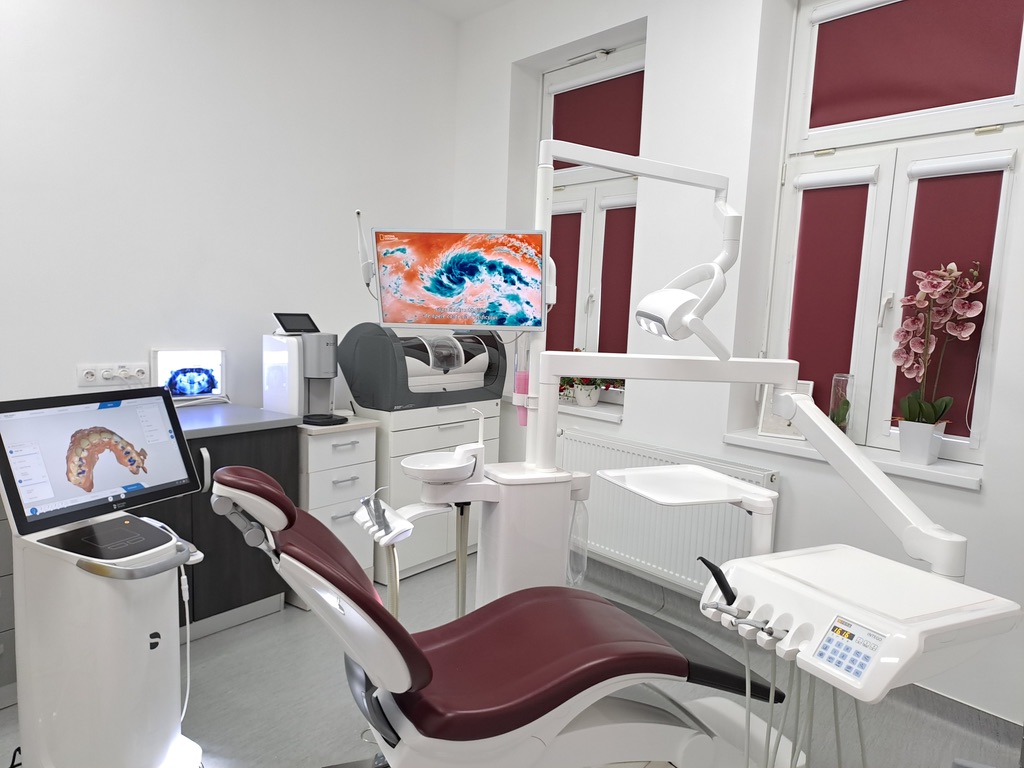
For our patients, CEREC means:
- A single working session "SINGLE VISIT DENTISTRY"
- Comfortable treatments
- Special aesthetics
- Perfect fit
- Restoring 100% functionality
- No allergic reactions to materials
- Minimally invasive treatments
Types of dental work performed with the CEREC System:
- Inlay, Onlay (Inlays, ceramic fillings)
- Total/partial dental crowns
- Crowns screwed or cemented on implants
- Dental bridges
- Bridges on implants
- Dental veneers
- Surgical guides
- Orthodontic appliances
- Digital study models
CEREC method work steps:
1. after the consultation and preparation of the tooth, the treated area is scanned with an intraoral camera. The classic impression is often uncomfortable, causes nausea and is difficult for patients to bear. The silicone used may not register the prepared area perfectly, hence the errors in communication with the dental laboratory and the need for more tests to correct the dental work before cementing it. 2. in a special program, the 3D digital model and the dental restoration (inlay/crown/bridge) are created, thus eliminating human error. The adaptation of the restoration is up to 25 microns, which offers superior accuracy to classic works, and automatically an increased lifespan in the environment of the oral cavity 3. the 3D created restoration will be milled into ceramic or zirconium cubes/blocks in the milling machine, the milling time varies between 3 and 10 minutes. Depending on the type of ceramic, a firing stage in a special oven for 5-15 minutes is necessary or not. 4. the final restoration is cemented in the same visit. The components of the Cerec Sirona system:
- the Primescan intraoral scanner
- 3d design program
- Milling unit - ceramic block milling machine
- optional Cerec Speedfire ceramic furnace
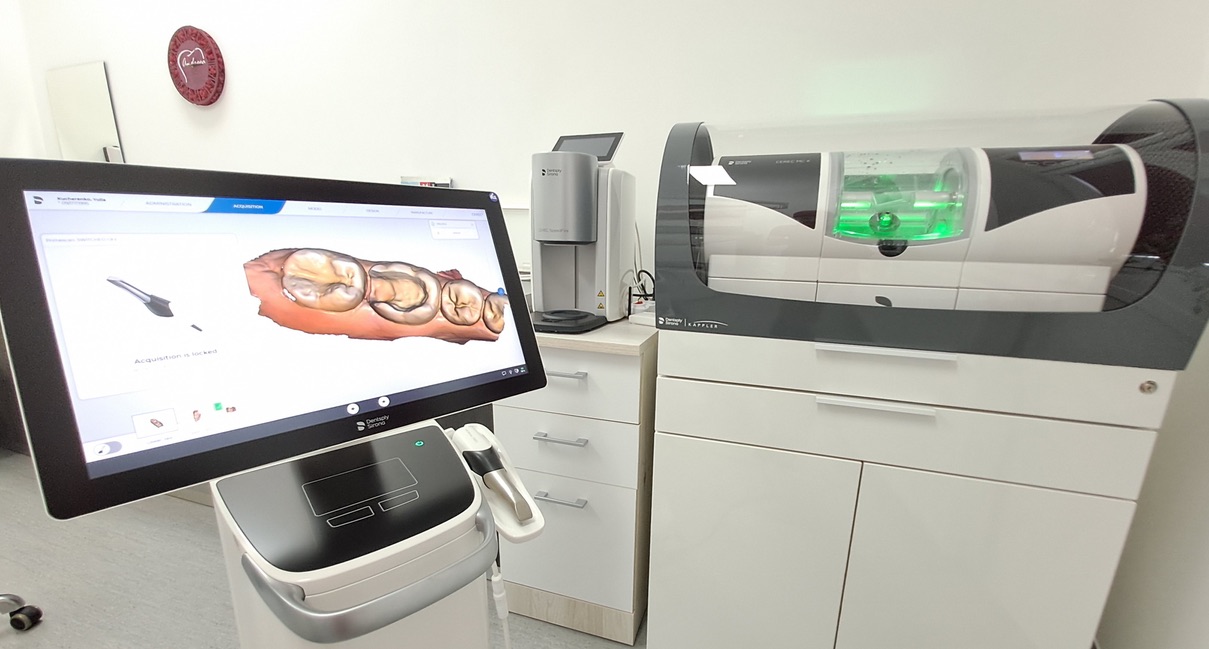
The advantages of the cerec system can be summarized in 4 words: AESTHETICS - FUNCTIONALITY - PRECISION - SPEED
NO UNPLEASANT PRINT MATERIALS
Say goodbye to classic impression materials. The dentist will take your impression with an intraoral camera and immediately transfer the image to a computer
NO TEMPORARY WORKS
Temporary works can chip or fracture, change color quickly. In the case of Cerec restorations, you will have the definitive cemented work done in one visit.
NO ADDITIONAL SESSIONS
Time is priceless, one visit, one anesthesia
LONG TERM STABILITY
The lifetime and mechanical and color stability of CAD CAM milled restorations is proven in millions of cases all over the world.
AESTHETICS AND RESISTANCE SIMILAR TO NATURAL TEETH
- thanks to the translucency of the integral ceramic, the restorations look like a natural tooth
- gray metal edges are not visible, as with classic metal-ceramic restorations
- maximum biocompatibility, without allergic or intolerant reactions to metal alloys
- hardness similar to that of natural teeth
- minimal invasiveness, the vitality of the tooth is preserved (in most cases root canal treatment is not necessary), healthy enamel is not polished, we preserve the dental structure and only remove caries.
Types of dental work performed with the CEREC System:
- Inlay, Onlay (Inlays, ceramic fillings)
- Total/partial dental crowns
- Crowns screwed or cemented on implants
- Dental bridges
- Bridges on implants
- Dental veneers
- Surgical guides
- Orthodontic appliances/li>
- Digital study models
Explanation of some terms - types of restorations
Inlay-Onlay-Ceramic fillingsIt represents the alternative to classic fillings made of composite resins, having a much higher mechanical resistance than these, almost non-existent risk of marginal caries due to the perfect adaptation to the edges of the cavity prepared in the tooth and superior aesthetics through the stability of the color over time. In short, inlays, compared to fillings, are much more resistant, do not cause secondary caries and do not stain from food pigments.
All-ceramic or zirconium crownsThey are superior to classic ceramic crowns on a metal support, they do not give allergic reactions to metal alloys or unpleasant taste. It perfectly resembles natural teeth, having the same translucency and transparency as the dental structure, doubled by a mechanical resistance superior to classic crowns.
Ceramic veneers:They are the most aesthetic solution, indicated in the case of colored, abraded/cracked front teeth, with spaces or, on the contrary, very little crowding, spectacularly restoring the appearance of the smile. The special ceramic materials from which the veneers are made allow a mechanical resistance and a special aesthetic at a thickness of less than one millimeter, thus the intervention on the dental structure is minimal.



